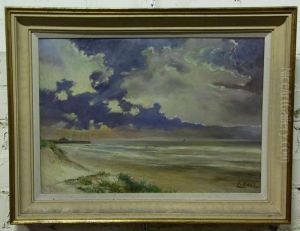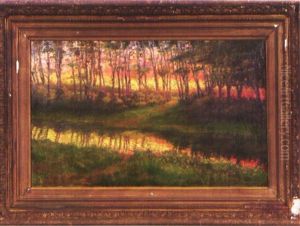Louis Boel Paintings
Louis Boel was a Flemish engraver, born in 1622 in Antwerp, a city renowned for its vibrant artistic community during the 17th century. His life and career were deeply embedded in the rich tapestry of Flemish art, a period marked by the Baroque style that dominated European art. Boel was part of a generation of artists who were instrumental in disseminating the Baroque aesthetic through prints and engravings, making the artworks of leading painters accessible to a broader audience.
Boel's training and early career were closely aligned with the practices of the time. He likely apprenticed under a master engraver, as was customary, learning not only the technical skills required for his craft but also the art of composition and the interpretation of paintings into engravings. This period of apprenticeship would have prepared him for a career that not only demanded technical excellence but also a deep understanding of the visual language of Baroque art.
Throughout his career, Louis Boel specialized in engraving works based on the paintings of prominent Flemish and Dutch masters, such as Peter Paul Rubens and Anthony van Dyck. These artists were leading figures in the Baroque movement, known for their dynamic compositions, vibrant use of color, and dramatic use of light and shadow. Boel's engravings played a crucial role in the spread of their fame, allowing their compositions to reach an audience far beyond those who could visit the churches, palaces, and galleries where the original paintings were displayed.
Boel's work is characterized by its meticulous attention to detail, its faithful rendering of the original paintings, and its ability to capture the emotional intensity of the Baroque style. Through his engravings, viewers could experience the grandeur of Rubens' epic historical and mythological scenes or the intimate, reflective qualities of van Dyck's portraits. His engravings were not mere copies but interpretations that conveyed the essence of the original works.
Louis Boel's contributions to the field of engraving were significant during his lifetime, and his works continue to be studied and admired for their technical skill and artistic sensitivity. He died in 1674, but his legacy lives on through his engravings, which remain valuable resources for understanding the dissemination and reception of Baroque art. Through his efforts, the splendor of Flemish Baroque painting was immortalized in print, bridging geographical and temporal distances and ensuring the enduring fame of its masterpieces.

